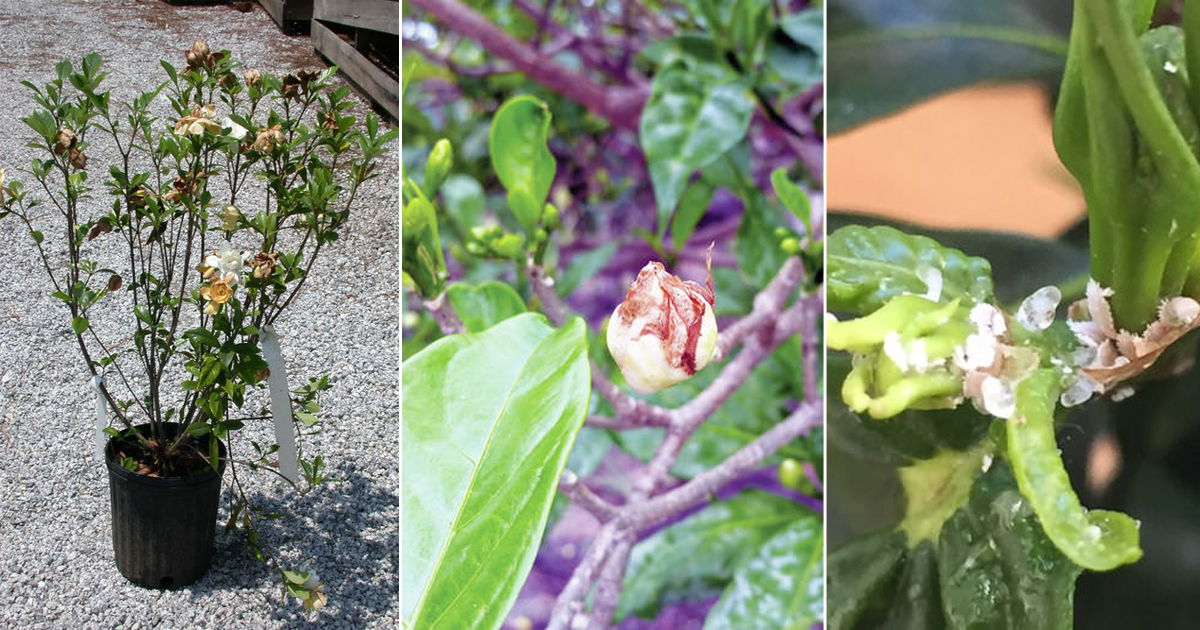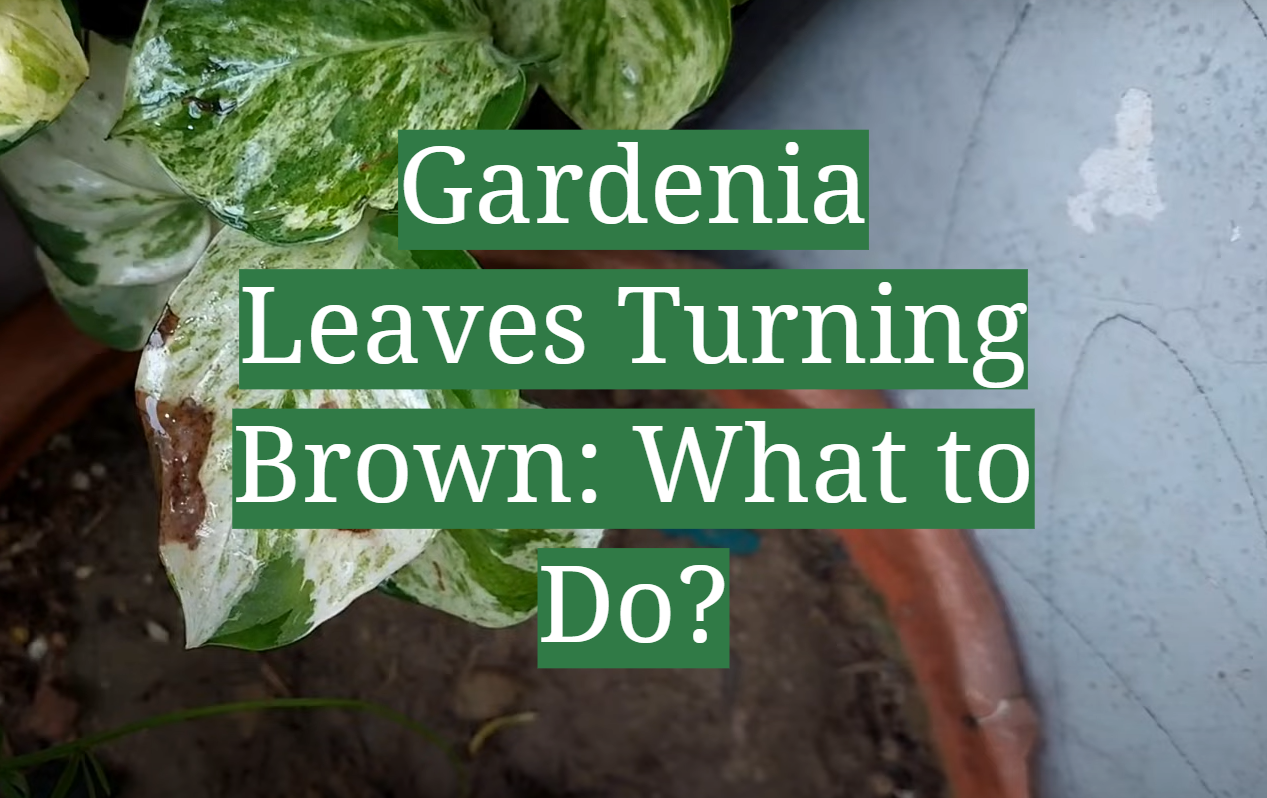Gardenias are cherished for their exquisite fragrance and stunning blooms, making them a favorite among garden enthusiasts. However, if you notice your gardenia turning brown, it can be concerning. Understanding the causes and remedies for this issue is essential for keeping your gardenia healthy and vibrant. In this comprehensive guide, we will explore the common reasons behind a gardenia’s browning leaves, offer preventive measures, and provide detailed care tips to ensure your gardenia thrives.
Understanding Gardenias
Before we delve into the specifics of browning leaves, it’s important to understand what gardenias are and why they are valued in gardening.
What Are Gardenias?
Gardenias are evergreen shrubs or small trees belonging to the Rubiaceae family. They are native to tropical and subtropical regions, primarily in Africa and Asia. With their waxy, dark green leaves and fragrant white or yellow flowers, gardenias are often used in landscaping and as houseplants. Their alluring scent makes them popular for potpourri and perfumes.
Ideal Growing Conditions
For optimal growth, gardenias require:
- Sunlight: They thrive in bright, indirect sunlight.
- Soil: Well-draining, acidic soil is crucial for their health.
- Water: Consistent moisture without waterlogging is essential.
- Humidity: High humidity levels benefit gardenias greatly.
Common Reasons for Gardenia Turning Brown
When you notice your gardenia turning brown, it can be caused by various factors. Identifying the underlying issue is key to resolving the problem. Here’s a breakdown of the most common causes:
1. Overwatering
Overwatering is one of the leading causes of browning leaves in gardenias. Excessive moisture can lead to root rot, which prevents the plant from absorbing necessary nutrients.
Signs of Overwatering
- Yellowing leaves before browning occurs
- Mushy roots when inspected
- Soil remains constantly wet
Tip: Always check the soil moisture before watering. If the top inch feels dry, it’s time to water.
2. Underwatering
Conversely, underwatering can also cause brown leaves. Gardenias need consistent moisture, and if they are deprived of water, they will show signs of stress.
Signs of Underwatering
- Crispy, brown leaf edges
- Wilting leaves
- Stunted growth
3. Poor Soil Conditions
Gardenias prefer acidic soil. If the soil pH is too high, it can cause nutrient deficiencies, leading to brown leaves.
Testing Soil pH
You can easily test your soil’s pH with a home testing kit. Aim for a pH of 5.0 to 6.0 for optimal gardenia health.
4. Nutrient Deficiency
Gardenias require specific nutrients, particularly nitrogen, iron, and magnesium. A deficiency in any of these can manifest as browning leaves.
Signs of Nutrient Deficiency
| Nutrient | Symptoms |
|---|---|
| Nitrogen | Yellowing leaves, stunted growth |
| Iron | Chlorosis (yellowing between veins), browning |
| Magnesium | Brown leaf tips, leaf curling |
5. Pests and Diseases
Pests such as aphids, spider mites, and whiteflies can infest gardenias, leading to browning. Additionally, fungal diseases can harm the plant.
Common Pests
- Aphids: Small, green or black insects that suck sap.
- Spider Mites: Tiny, web-spinning pests that cause discoloration.
- Whiteflies: White, moth-like insects that also suck sap.
Common Diseases
Look out for symptoms like leaf spots, powdery mildew, and root rot. These can severely affect the health of your gardenia.
Preventive Measures
Prevention is the best way to avoid gardenia browning. Here are essential tips to keep your gardenia healthy:
1. Watering Techniques
Adopt a consistent watering schedule. Water deeply and less frequently, allowing the topsoil to dry out before the next watering.
2. Soil Management

Ensure that your gardenia is planted in well-draining, acidic soil. Amend your soil with organic matter to improve its texture and pH balance.
3. Regular Feeding

Fertilize your gardenia every month during the growing season with a balanced fertilizer. Look for fertilizers specifically designed for acid-loving plants.
4. Pest Control
Regularly inspect your gardenia for signs of pests. If you spot any, take immediate action with insecticidal soap or neem oil.
5. Monitoring Humidity
Gardenias thrive in high humidity. Consider using a humidifier or placing a pebble tray filled with water near the plant to increase moisture levels.
How to Revive a Brown Gardenia
If your gardenia is already showing signs of browning, don’t despair! Here’s a step-by-step guide to reviving it:
1. Assess the Damage
Begin by examining the leaves and the root system. Remove any dead or severely damaged leaves to promote new growth.
2. Adjust Watering Practices, Gardenia Turning Brown
Modify your watering technique based on the plant’s current needs. Ensure that the plant is neither too dry nor too soggy.
3. Fertilize Appropriately
If you suspect nutrient deficiencies, apply a balanced fertilizer or one specific for gardenias. Always follow the manufacturer’s instructions.
4. Increase Humidity
Try placing the gardenia in a more humid environment. Mist the leaves regularly or use humidity trays to provide moisture.
5. Monitor for Pests
Continuously check for pests and treat them promptly. Regularly cleaning the leaves can also help prevent infestations.
When to Seek Professional Help
If your gardenia continues to decline despite your best efforts, it may be time to consult a gardening professional. They can provide insights into underlying issues that may not be immediately visible.
Important Note: If you’re uncertain about how to treat a specific issue with your gardenia, consider taking a sample of the affected leaves to your local garden center for expert advice.
FAQs About Gardenias Turning Brown
1. Why are my gardenia leaves turning yellow before turning brown?
Yellowing is often a sign of stress, usually caused by overwatering or nutrient deficiencies. Address these issues promptly to prevent further damage.
2. Can brown leaves on my gardenia recover?
Brown leaves typically do not recover, but removing them can encourage new growth. Focus on correcting the underlying problems.
3. How often should I fertilize my gardenia?
During the growing season, fertilize once a month with a fertilizer designed for acid-loving plants to promote healthy growth.
4. What pests should I look for on my gardenia?
Common pests include aphids, spider mites, and whiteflies. Regular inspections will help you catch infestations early.
Conclusion
Caring for a gardenia can be a rewarding experience, and addressing issues like browning leaves promptly is crucial to its health. By following the guidelines Artikeld in this post, you can help ensure your gardenia remains a stunning centerpiece in your garden or home. Happy gardening! 🌸
